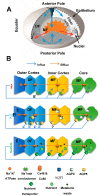Nutritional Strategies to Prevent Lens Cataract: Current Status and Future Strategies
- PMID: 31137834
- PMCID: PMC6566364
- DOI: 10.3390/nu11051186
Nutritional Strategies to Prevent Lens Cataract: Current Status and Future Strategies
Abstract
Oxidative stress and the subsequent oxidative damage to lens proteins is a known causative factor in the initiation and progression of cataract formation, the leading cause of blindness in the world today. Due to the role of oxidative damage in the etiology of cataract, antioxidants have been prompted as therapeutic options to delay and/or prevent disease progression. However, many exogenous antioxidant interventions have to date produced mixed results as anti-cataract therapies. The aim of this review is to critically evaluate the efficacy of a sample of dietary and topical antioxidant interventions in the light of our current understanding of lens structure and function. Situated in the eye behind the blood-eye barrier, the lens receives it nutrients and antioxidants from the aqueous and vitreous humors. Furthermore, being a relatively large avascular tissue the lens cannot rely of passive diffusion alone to deliver nutrients and antioxidants to the distinctly different metabolic regions of the lens. We instead propose that the lens utilizes a unique internal microcirculation system to actively deliver antioxidants to these different regions, and that selecting antioxidants that can utilize this system is the key to developing novel nutritional therapies to delay the onset and progression of lens cataract.
Keywords: antioxidant supplements; cataract; dietary antioxidants; lens.
Conflict of interest statement
The authors declare no conflict of interest.
Figures



References
Publication types
MeSH terms
Substances
Grants and funding
LinkOut - more resources
Full Text Sources
Medical

